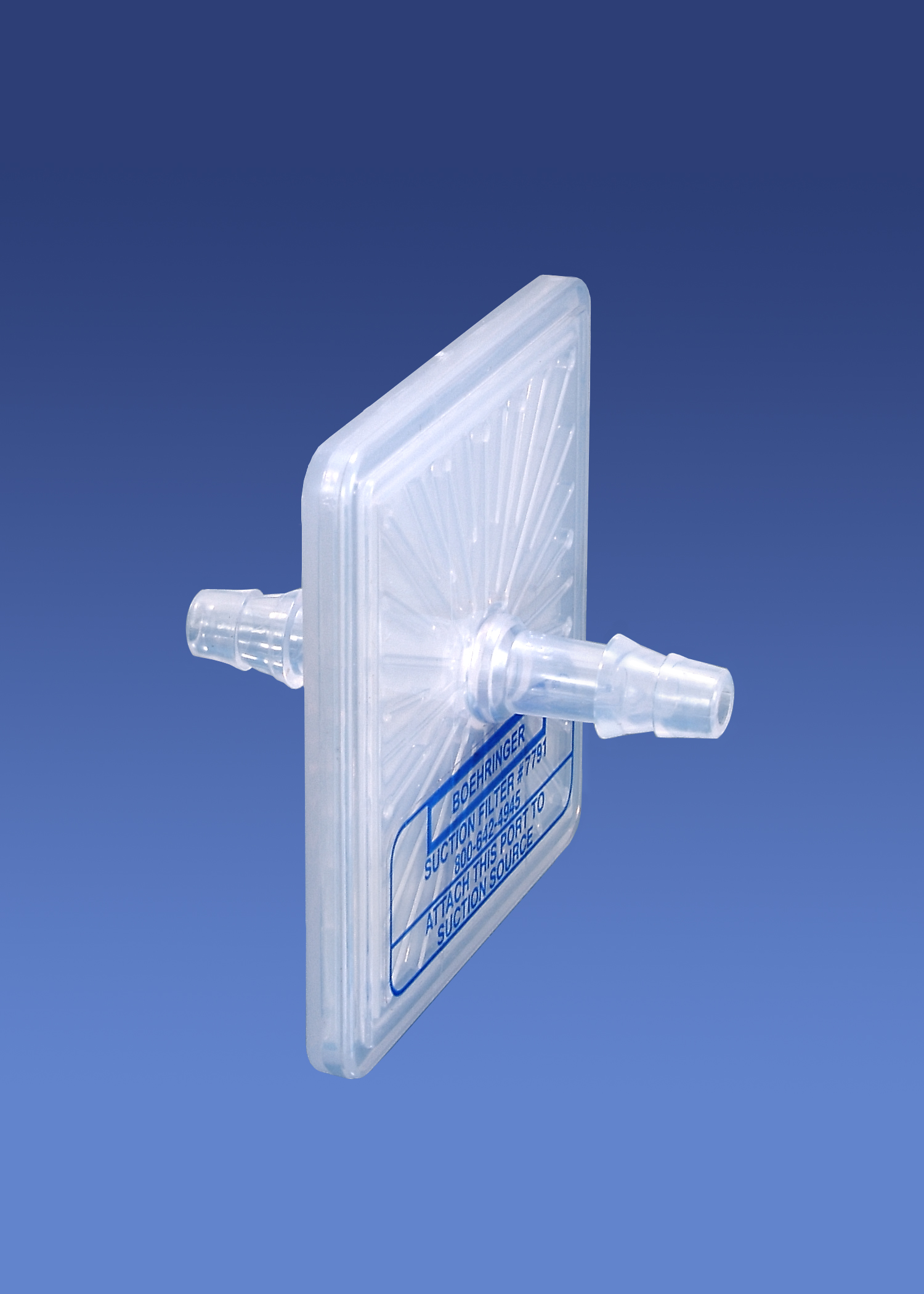Every so often, a customer will ask about putting inlet filters on the suction regulators we make. Up until about five years ago, we sold inlet filters as an option. When we weighed the options as a manufacturer, we found many downsides and few upsides. There was a fair bit of misunderstanding about what they do and what they don’t do; hopefully, we can help set this straight.
The small inlet filters (about 3″ square) attached to the inlet side of a suction regulator are designed to prevent gross infiltration from getting into the regulator, reducing the amount of service needed since fluid enters the inner workings. However, these filters do not prevent infectious agents from entering your regulator. For some perspective, your wall inlet achieves 89 liters per minute of airflow per NFPA99. For a bacterial filter (0.2-micron filter) to accomplish this airflow, you would need about one square foot of membrane area, which is about twenty times the size of one of these small filters.
Your central suction system is not sterile. It is not even close to sterile. It would be best if you routinely were not getting fluid into your central suction lines, but NFPA99 indeed foresaw that this would be a contaminated system. The outlets from your central vacuum pumps cannot exhaust within 25′ of any entrance to the hospital (NFPA99 5.1.3.7.7.2). Typically, this means a stack is far away from a building or high off the hospital’s top, far enough away to prevent contamination from the vacuum system from reentering the hospital.
Pros —
- The use of filters will prevent maintenance due to accidental flooding of the suction regulator.
Cons —
- Ideally, they are single patient-use. Even though filters do not stop bacterial contamination of your regulator and wall, they capture a fair amount of bioburden and keep it closer to the next patient.
- If these filters remain unchanged for the next patient, they must be on some routine change interval. Even though the filter may not look clogged, dust and debris can seriously reduce airflow. The filter may appear subtly off-white or grey, and airflow inhibited. In this case, you could have a reading on the regulator gauge but no suction delivered to the patient. If you were to need suction for an emergency airway clearance, the results could be catastrophic.
- If the filter screws directly into the suction regulator, it is at risk of becoming a service item itself when it breaks off. Trying to remove small plastic parts from a threaded coupling also puts the primary regulator at risk. If you want to employ a filter that screws directly into the regulator, we would suggest screwing into an adapter, so the threads of the primary regulator are not at risk.
https://www.boehringerlabs.com/medical-devices/suction-fittings/pn-2164-1-8npt-m-f-coupler/
Back to Blog


